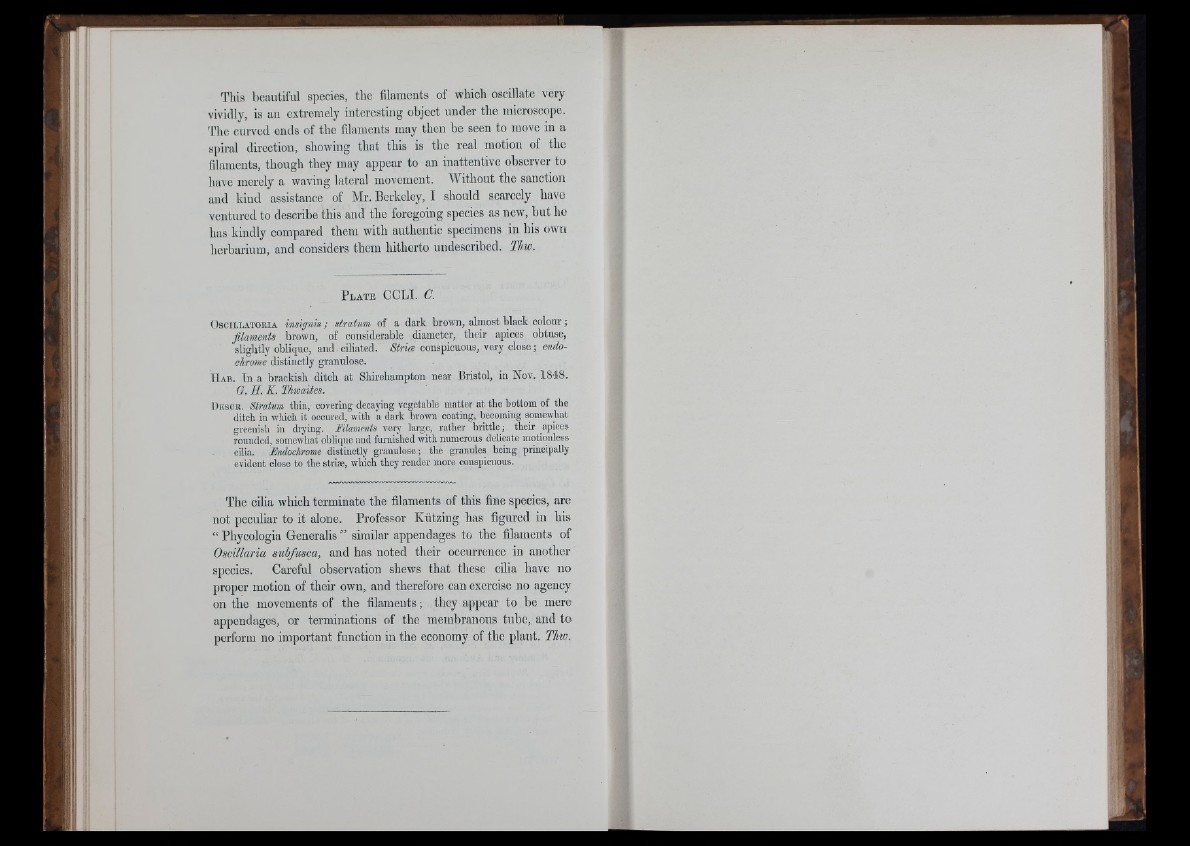
This beautiful species, the filaments of which oscillate very
vividly, is an extremely interesting object under the microscope.
The curved ends of the filaments may then be seen to move in a
spiral direction, showing that this is the real motion of the
filaments, though they may appear to an inattentive observer to
have merely a waving lateral movement. Without the sanction
and kind assistance of Mr. Berkeley, I should scarcely have
ventured to describe this and the foregoing species as new, but he
has kindly compared them with authentic specimens in his own
herbarium, and considers them hitherto undescribed. Thw.
P la t e CCLI. C.
O s o i l l a t o e i a insignis ; stratum of a d a rk brown, almost black colour ;
filaments b rown, of considerable diame ter, th e ir apices o b tu se,
slig h tly oblique, a n d c iliated. Sbrioe conspicuous, very close ; endochrome
dis tin c tly granulose.
TIa b . fn a brackish ditch a t Shirehampton near Bristol, in Nov. 1848.
G. H . K. Thwaites.
D e sc e . Stratum thin, covering decaying vegetable matter at the bottom of the
ditch in which it occured, with a dark brown coating, becoming somewhat
greenish in drying. Mlaments Yerj lai-gc, rather b rittle ; their apices
rounded, somewhat oblique and furnished with numerous delicate motionless
cilia. Endochrome distinctly granulose; the gramdes being principally
evident close to the striæ, which they render more conspicuous.
The cilia which terminate the filaments of this fine species, are
not peculiar to it alone. Professor Kiitzing has figured in his
“ Phycologia Generalis ” similar appendages to the filaments of
Oscillaria suhfusca, and has noted their occurrence in another
species. Careful observation shews that these cilia have no
proper motion of their own, and therefore can exercise no agency
on the movements of the filaments; they appear to be mere
appendages, or terminations of the membranous tube, and to
perform no important function in the economy of the plant. Thw.